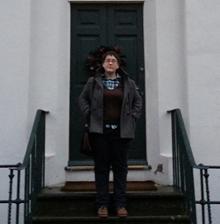Miriam
Article
"Now that I have got into the swing of the data entry, I have started looking at the names and occupations I am typing, and I have started to consider the people and lives behind the records."

One of the effects of such a large archive is that there are many different jobs, but each job has a very narrow focus. All the archivists at the LMA deal exclusively with cataloguing the records. There is a separate team of people that work full-time on the enquiry desk, and another department that handles the education and interpretation side of the archives. At a smaller institution all of these jobs would be likely to be shared with two or three people, meaning that the archivist would be involved with handling daily enquiries, arranging workshops or displays and helping to interpret the information within the archives (as well as being responsible for cataloguing the records).
Now that I have got into the swing of things with the data entry, I have started looking at the names and occupations I am typing, and I have started to consider the people and lives behind the records. The index cards I was inputting today referred to records from the 17th and 18th centuries and spanned the time of the Great Fire of London in the Old Bailey area, which was destroyed by the fire. It was really interesting to note how this impacted on the records, as there was a massive increase in land deeds after the fire
As I am hoping to pursue a career in archives, whilst on this placement I would like to gain a background that will help provide me with a wide and varied experience of a typical archivist's duties. As such, this morning I arranged to see Jan, one of my supervisors whilst at placement, to talk about the possibility of spending some time learning about some of the public facing aspects of working in an archive. Jan is now looking into arranging for me to spend time at the enquiries desk and in the education and interpretation team to see what they do. She has also suggested I attend an event that is being held at Keats House on Sunday, something that the education and interpretation team helped to organise.
On Friday I had my first day at Keats House. The atmosphere is very different to the LMA as there are only 5 staff members (and two of them are part-time). Working in a historical house I also feel much closer to history than I did working in the LMA offices or storage rooms, as although historical documents were all around me in the archive storage rooms at the LMA, they were packed away in boxes so I couldn't see them.
After this, I typed up some poems that had been written by school children at an event a few weeks agowhich will eventually be published in a book featuring John Hegley, Keats House’s poet-in-residence. The 'poet-in-residency' program is an opportunity for a poet to reach a wider audience, whilst drawing inspiration from Keats House, the gardens and the collections.
Talking about a similar program, running at the Isabella Stuart Gardner Museum in the USA, Hilde Hein explains that, 'These artist-in-residency programs are gaining currency, bringing new vitality to the institution. I found that by attending these events I came to view the museum differently and with renewed interest. By encouraging such unscripted ways of understanding, the museum expands creative inquiry rather than simply managing established information.'